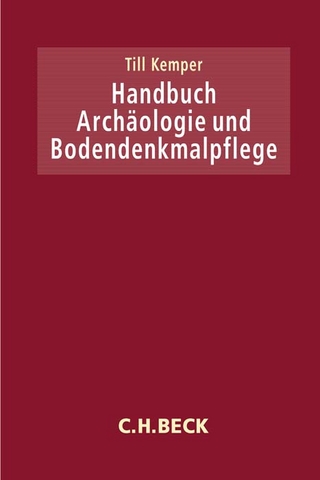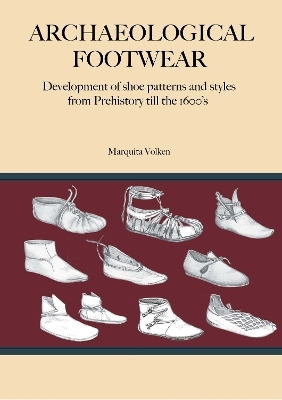
Over the Mountains and Far Away: Studies in Near Eastern history and archaeology presented to Mirjo Salvini on the occasion of his 80th birthday
Archaeopress Archaeology (Verlag)
978-1-78491-943-6 (ISBN)
The publication of ‘Over the Mountains and Far Away: Studies in Near Eastern history and archaeology presented to Mirjo Salvini on the occasion of his 80th birthday’ was initiated by the Institute of Archaeology and Ethnography, National Academy of Sciences of Armenia, the International Association of Mediterranean and Oriental Studies (Rome, Italy) and the Association for Near Eastern and Caucasian Studies (Yerevan, Armenia) as a tribute to the career of Professor Mirjo Salvini on the occasion his 80th birthday. It is composed of 62 papers written by his colleagues and students from Italy, Germany, France, Spain, Poland, the Netherlands, Denmark, Austria, Great Britain, Russian Federation, Israel, Turkey, Islamic Republic of Iran, Georgia, United States and Armenia. The contributions presented here cover numerous topics, a wide geographical area and a long chronological period. However, most of the contributions deal with research in the fields of Urartian and Hittite Studies, the topics that attracted Prof. Salvini during his long and fruitful career most.
PAVEL AVETISYAN is a leading archaeologist from Republic of Armenia. Area of his research is Old World archaeology, particularly Neolithic to Iron Age cultures of Armenia and Transcaucasia, problems of their periodisation and chronology. P. Avetisyan led various excavation projects in Armenia (Talin, Agarak, Karashamb, Godedzor, Masis Blur, and others). He received his PhD in 2003 (‘Periodisation and Chronology of the Middle Bronze Age of Armenia’) and Dr Habil. in 2014 (‘Armenian Highland during the 24-9th Centuries BC: The Dynamics of Socio-Cultural Transformations, according to Archaeological Data’). Prof. Avetisyan is currently Director of the Institute of Archaeology and Ethnography, National Academy of Sciences, Republic of Armenia and Professor at the Yerevan State University. Publications include three monographs and more than 100 articles devoted to the mentioned problems. | ROBERTO DAN is a member of ISMEO – International Association of Mediterranean and Oriental Studies. He is an archaeologist specialised in architecture, history and landscape archaeology of the Near East, focused on the 1st millennium BC (Urartu, Achaemenid Empire). He obtained his PhD from the ‘Sapienza’ University of Rome, with a thesis on the archaeological landscape of Urartu. Roberto has conducted fieldwork in Armenia, Georgia, Turkey and Iran. He is director of the ISMEO – Archaeological Mission to South Caucasus (AMSC), a project co-financed by the Ministry of Foreign Affairs and International Cooperation of the Italian Republic, which involves archaeological activities in Armenia (Kotayk Survey Project since 2013; Vayots Dzor Project since 2015) and Georgia (Samtskhe-Javakheti Project since 2017), with excavations in the Urartian sites of Solak 1 and Yelpin 1. In 2015, he published a book devoted to the analysis of historical and architectural relations between Urartu and the Achaemenid Empire. | YERVAND GREKYAN is a leading researcher at the Institute of Archaeology and Ethnography, National Academy of Sciences of Armenia and Associate Professor at the Armenian State Pedagogical University. He received his PhD in 2002 (‘History of the Mannean Kingdom’) and defended his habilitation thesis on the structure of the Urartian Kingdom at the Institute of Archaeology and Ethnography, National Academy of Sciences of Armenia in 2016 (‘Biainili-Urartu. State and Society’).Y. Grekyan is the author of more than 70 articles and book chapters devoted to the ancient history and culture of the Near East and especially of the Armenian Highland in the Late Bronze and Iron Ages. He is a founding member of the Association for Near Eastern and Caucasian Studies and vice-editor of Aramazd: Armenian Journal of Near Eastern Studies.
Editorial – by Pavel Avetisyan, Roberto Dan, Yervand Grekyan; Foreword – by Adriano Rossi; Mirjo Salvini: Bibliography ; Bīsotūn, ‘Urartians’ and ‘Armenians’ of the Achaemenid Texts, and the Origins of the Exonyms Armina and Arminiya – by Gregory E. Areshian; Human Images from the Eastern Urartian Periphery: Anthropomorphic Sculpture of Syunik on the Cusp of the 2nd and 1st Millennia BC – by Hayk Avetisyan, Artak Gnuni, Gagik Sargsyan and Arsen Bobokhyan; Cult-Places of Ancient Armenia: A Diachronic View and an Attempt of Classification – by Pavel Avetisyan and Arsen Bobokhyan; The Elamite Tablets from Armavir-Blur (Armenia): A Re-Examination – by Miqayel Badalyan, Gian Pietro Basello and Roberto Dan; Šiuini: The Urartian Sun god – by Miqayel Badalyan; Protective Clay Figurines in the Urartian Fortresses – by Atilla Batmaz; Mesopotamians and Mesopotamian Learning at Hattusa, Thirty Years On – by Gary Beckman; Too Many Horns in the Temple of the God Hadad of Aleppo at the Time of the Ebla Archives! – by Maria Giovanna Biga; The Roots of the Urartian Kingdom: The Growth of Social Complexity on the Armenian Plateau Between Ancient Bronze and Early Iron Ages – by Raffaele Biscione; Thoughts about the Audience-Hall of Naramsin at Tell Asmar-Ešnunna – by Felix Blocher; The Urartian God Quera and the Metamorphosis of the ‘Vishap’ Cult – by Arsen Bobokhyan, Alessandra Gilibert and Pavol Hnila; Laḫmu, ‘The Hairy One’, and the Puzzling Issue of Mythology in Middle Assyrian Glyptic Art – by Dominik Bonatz; The First Gilgamesh Conjectures About the Earliest Epic – by Giorgio Buccellati; Ayanis Fortress: Only a Military Fortress or More? – by Altan Çilingiroğlu; Granaries in Urartu and Neighboring States and the Monumentalization of Administrative Records – by Birgit Christiansen; Hasanlu, the Southern Caucasus and Early Urartu – by Megan Cifarelli; The King of the Rock Revisited: The Site of As-Sila (Tafila, Jordan) and the Inscription of Nabonidus of Babylon – by Rocío Da Riva; A New Painting Fragment from Erebuni and an Overview of Urartian Wall Paintings – by Roberto Dan, Yeghis Keheyan, Nelli Hovhannisyan, Artur Petrosyan, Yelena Atoyants, Priscilla Vitolo and Boris Gasparyan; New Observations Regarding the Urartian Inscription of the Tul-e Talesh Bracelet – by Maryam Dara; Nouvelles réflexions relatives à la fin du royaume d’Ourartou – la forteresse d’Erebuni vers la fin du VIIe siècle av. J.-C. – by Stéphane Deschamps, François Fichet de Clairfontaine and Mary Karapetyan; Quand dieu aide les vainqueurs... – by Jean-Marie Durand; The Relationship between State and Nomads in the Urartian Kingdom – by Aylin Ü. Erdem; Alcune considerazioni sulla posizione di Uršum e Ḫaššum/Ḫaššuwa: dal commercio paleo-assiro al regno di Ḫattušili I – by Massimo Forlanini; L’espressione (ANA) PANI NP nei colofoni ittiti – by Rita Francia; From Khazane Kapoussi/Hazine Kapısı to Analıkız: Rethinking a Place at Tušpa Citadel – by Bülent Genç; Some Remarks on Qulḫa – by Levan Gordeziani; The Problem of the Origin of the Urartian Scribal School – by Yervand Grekyan; The Cross Statue as a Symbol of Christianizing Armenia – by Grigor Grigoryan; Oshakan Tomb No. 25 Revisited – by Michael Herles; Urartian Envoys to Ashurbanipal’s Court – Some Remarks on the Assyro - Urartian Relations in the First; Half of the 7th Century BC – by Krzysztof Hipp; The ‘City of Ḫaldi’ in the Land of Uaza – by Simon Hmayakyan; Urartian Inscriptions at the Van Museum. A New Collection – by Kenan Işık; Towards the Reconstruction of the Hurro-Urartian Protolanguage – by Margarit Khachikyan; A New Rock-Cut Tomb in Van Fortress/Tushpa – by Erkan Konyar; Upper Euphrates Political Geography Reconsidered – by Aram Kosyan; The Urartian Rock-Cut Chamber at Yelpin / Armenia – by Stephan Kroll; Le terre di Urartu nella descrizione di Strabone – by Gianfranco Maddoli; The Armenian Patronymic Arcruni – by Hrach Martirosyan; Iron Age Luvian tarrawann(i)- – by H. Craig Melchert; An Echo of Assyria in Plutarch’s Life of Alexander – by Sarah C. Melville; Lo strano caso del Sig. VITA+RA/I, scriba ‘4’ alla corte ittita – by Clelia Mora; From Petroglyphs to Alphabet. A Brief Characterization of the Writing Culture of Pre-Christian Armenia – by Artak Movsisyan; New Iri-Saĝrig Ration Distribution and Related Texts – by David I. Owen; Le melograne della basilica di Santa Cecilia in Trastevere – by Neda Parmegiani; On the Ethnic Origin of the Ruling Elite of Urartu – by Armen Petrosyan; Solak 1. Una fortezza urartea nella valle del Hrazdan, Armenia – by Artur Petrosyan, Roberto Dan and Priscilla Vitolo; Un piccolo frammento di una lunga storia: un cammello a Tell Barri/Kahat (Siria) – by Raffaella Pierobon Benoit; New Ways of Etymologizing Certain Fragments of the Cuneiform Inscription of Tanahat – by Ashot Piliposyan; A Note about an Ewer of Probable Anatolian Production, from One of the Tombs of the Assyrian Queens at Nimrud – by Frances Pinnock; Armenian Toponyms in the ‘Patria Quae Dicitur Parthia’ according to the Cosmographia of Ravennas Anonymus – by Daniel T. Potts; Updates on Verbal Transitivity and Nominal Ellipsis in Hittite – by Jaan Puhvel; The Assyria-Urartu Relationship and the Political Role of Mercenaries – by Julian Edgeworth Reade; Zur Frage des Weiterlebens urartäischer Namen in achaimenidischer Zeit – by Rüdiger Schmitt; Auf der Suche nach einem Reichsgott für Urartu – by Ursula Seidl; Everyday Life in Trialeti (South Caucasus) in the Middle and the Second Half of the 2nd Millennium BC – by Nino Shanshashvili and Goderdzi Narimanishvili; A New Fragment of an Inscription of Rusa, Son of Argišti, from the susi Temple of Bastam, Iran – by Marie-Claude Trémouille, Roberto Dan, Keomars Haji Mohammad and Ebrahim Bodaghi; ‘Excavating’ Looted Tombs at Pessinus (2011-2013) – by Gocha R. Tsetskhladze; The Bronze Stamp Seals of Marlik: Evidence of Bronze Age Links with Eastern Iran and Central Asia – by Ali A. Vahdati and Amir Saed Mucheshi; Beyt’a Mêzînê A Trace of the Qur’anic Influence on the Yezidi Oral Religious Tradition – by Vardan Voskanian; The Ethno-Cultural Diversity of Central Anatolian Early Iron Age Inhabitants – by Jak Yakar; The Mighty Weapon of Tarhunt – by Ilya Yakubovich; Illiterate Urartians: Writing and the Ayanis Outer Town – by Paul Zimansky
| Erscheinungsdatum | 04.06.2019 |
|---|---|
| Zusatzinfo | Illustrated throughout in colour and black & white (135 plates in colour) |
| Verlagsort | Oxford |
| Sprache | englisch |
| Maße | 205 x 290 mm |
| Gewicht | 2032 g |
| Themenwelt | Geisteswissenschaften ► Archäologie |
| ISBN-10 | 1-78491-943-8 / 1784919438 |
| ISBN-13 | 978-1-78491-943-6 / 9781784919436 |
| Zustand | Neuware |
| Haben Sie eine Frage zum Produkt? |
aus dem Bereich


